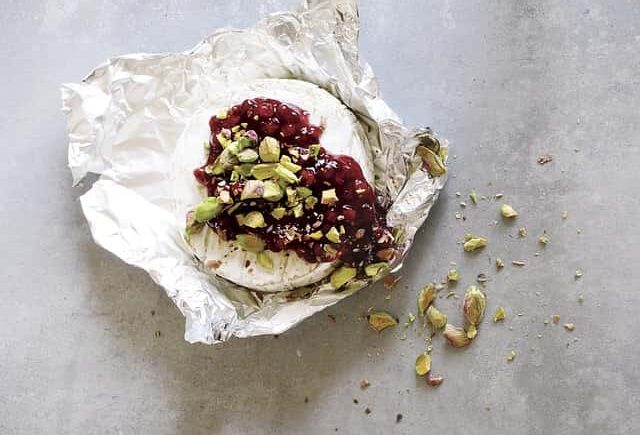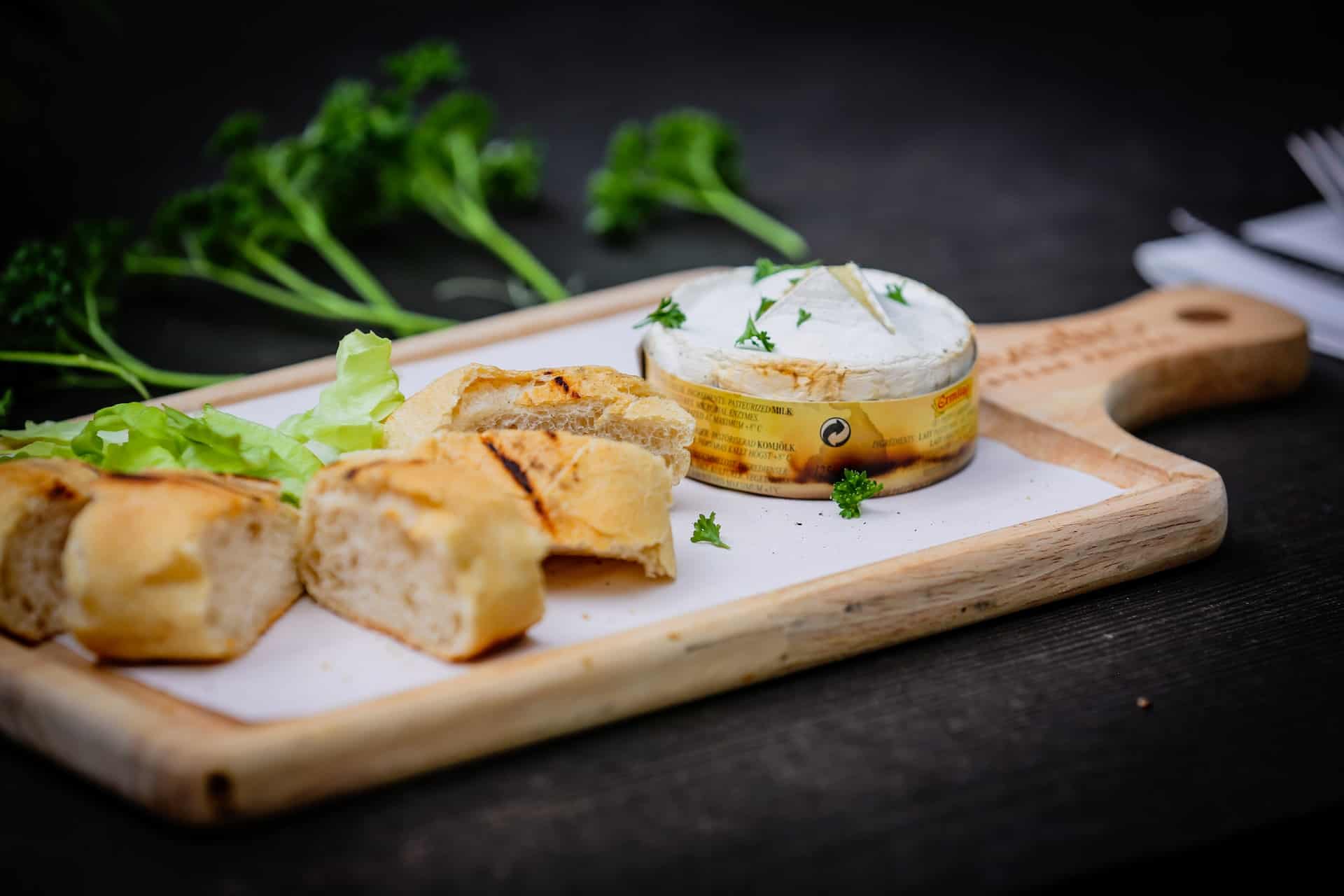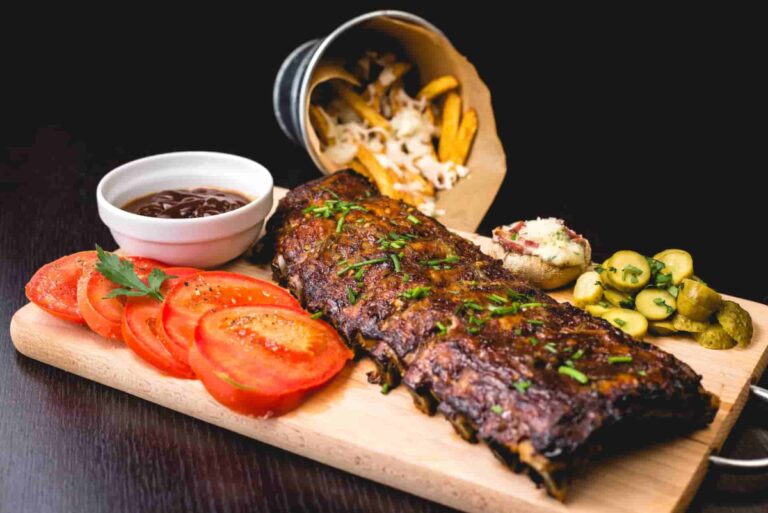Camembert 41 top kitchen insights
Did you know that French-certified Camembert is manufactured from unpasteurized milk, known as “Camembert de Normandie”?
- A French farmer called Marie Harel is credited with inventing Camembert in the late 1700s in the hamlet of the same name in Normandy, which is located in Europe’s France. The cheese was a regular addition to French soldier ration boxes during World War I.
- Although they are similar in texture and appearance, camembert and brie cheeses are not the same. Brie cheese is typically much larger or sliced from a large wheel, ages more slowly, has a milder flavour, and frequently uses a different substance to create the mouldy rind than camembert does. Camembert cheese is named after the French town where it was first produced.
- In order for a camembert to be considered perfect, it must first be aged for two to three weeks by the person who made it, then it must be sold and then it must be aged for a few more weeks by a fromager-affineur, who is a cheese expert who has his own cellars with low temperatures and controlled levels of high humidity. This allows the camembert to fully develop its own unique qualities.
- In most cases, a full camembert will be offered for sale in thin, circular, wooden containers that are crafted from poplar. Some examples of contemporary iterations of packaging include ring-pull tabs on cartons and tin cans with opening mechanisms (Camembert in metallic boxes does not exist on the French market).

Camembert nutrition values and health benefits
- Protein and fat are both abundant in camembert, with the majority of its fat being composed of saturated and monounsaturated fatty acids. The quantity of carbohydrates that are provided by the cheese is rather low, and it only has minute levels of sugar (lactose).
- The vitamin A content of camembert is very high, and it also contains a respectable quantity of the B vitamins. In addition to this, the cheese contains minute quantities of the vitamins E and K1. Camembert may also provide a considerable quantity of vitamin K2, although this depends on the particular cheese that is used and the sort of bacterial culture that is utilised.
- In the last few years, there have been a number of research studies that have investigated the relationship between dairy foods and the health of the cardiovascular system. Considerable evidence from a number of different systematic studies suggests that fermented dairy products such as Camembert may reduce the likelihood that we may develop vascular disorders or have cardiovascular events. These studies almost always come to the conclusion that there is either no influence or a beneficial impact on the risk of cardiovascular disease and stroke. Cheese consumption, on the other hand, has been shown in randomised clinical studies with human volunteers to increase HDL cholesterol while either lowering or having no impact whatsoever on LDL cholesterol.
- The calcium content of camembert is quite high; a serving size of 50 g gives 20% of the daily calcium recommendation. Camembert is a soft, creamy cheese. A calcium consumption that is adequate is essential for maintaining the health of our bones, and combined with other nutrients, an adequate calcium intake may lower the chance of developing osteoporosis. Calcium found in dairy products is also far more bioavailable than the mineral found in (the majority of) vegetables.
- A significant concentration of microorganisms that are usually referred to as “beneficial bacteria” may be found in the rind (also known as the “mould”) of Camembert cheese. In addition to that, this bacterium makes its way into our digestive system, where it is possible that part of it may remain and contribute to a balanced microbiota in the intestines. According to a number of studies, eating Camembert will not dramatically alter the make-up of the microbiota in the stomach. Nevertheless, they also demonstrate that certain bacteria are able to survive digestion and become a component of the bacterial colony in the gut.
- Camembert is a fantastic source of protein, providing approximately the same amount that one would get from eating meat due to the cheese’s protein density of 20%. Protein has several advantages for our health, including the fact that it is necessary for the expansion and repair of our body and that it plays a part in the immune response. Additionally, of the three types of macronutrients, protein is the most satiating. Consuming an adequate amount of protein results in a stronger sense of fullness and a reduction in hunger.
- The composition of Camembert cheese, which contains a significant quantity of vital amino acids, vitamins, and minerals, may be examined to determine the positive effects that eating Camembert cheese has on the human body. This has an exceptionally beneficial impact not just on digestion but also on mood and general health. Numerous dietitians recommend to their clients that they include Camembert into their ongoing diet. On the other hand, in this case there is a limitation, and that is that a person has to consume 50 g of cheese in order to deliver the body only favourable effects.
- If you consume no more than the prescribed quantity of cheese each day, which is no more than 50 g, there will not be any bad consequences from drinking and there cannot be. On the other hand, consuming an excessive amount of mould may induce diarrhoea because it includes a fungus that stimulates the creation of antibiotics, which in turn kills beneficial bacteria. All of these factors might contribute to a condition that affects the gastrointestinal system. Those who have issues with their bowels should either refrain from using delicatessen altogether or use it with extreme caution in order to minimise the risk of any adverse effects.
100g of camembert has 299 calories(1251kj), 20g protein, 24g fat, and 0g carbs, including 0g fibre.

How to store camembert and how to buy them
- Camembert belongs to the bloomy rind subfamily of cheeses and has a delicate ripening process. It is well-known for having a compact round form, a rind that is pure white, an interior that is creamy, and tastes that, depending on age, range from mild and milky to earthy and vegetable-like. Camembert’s texture transforms from somewhat firm to oozy and runny as it develops, and the cheese’s tastes and smells get more robust as it ripens for a longer period of time.
- You may get Camembert cheese in speciality cheese counters in well-stocked supermarkets as well as at locally owned and operated cheese stores. You may also buy cheeses made locally or regionally that are reminiscent of Camembert at your neighbourhood farmer’s market or in our online artisan cheese store.
- You may keep Camembert in the refrigerator at the for up to three weeks, or you can leave it out on the counter at ambient temperature for up to seven days (below 70 degrees). As a result of the Grotto’s reusable clay brick’s ability to retain the ideal humidity for cheese, no cheese paper nor plastic wrap are required for storage. Camembert should be wrapped in cheese paper and stored in the refrigerator’s coldest section if the Grotto is not being used.
- If you want your wedge of Camembert cheese to have the longest possible shelf life after it has been opened, wrap the original packaging tightly in plastic wrap or aluminium foil. For even better results, wrap the cheese in wax or parchment paper first, and then cover it with plastic wrap before placing it in the refrigerator. It is possible to keep a slice of Camembert cheese in the refrigerator for up to two weeks if it is properly preserved.
- When freezing Camembert cheese, store the cheese in the freezer before the number of days indicated for storage in the refrigerator has passed. This will allow the cheese to retain its flavour and texture for a longer period of time. The texture of frozen cheese may change and it may lose part of its taste; the thawed Camembert cheese will be most suitable for use in prepared recipes such sauces, soups, and casseroles.
- Camembert cheese may be frozen in wedges or blocks; to do so, follow these steps: The cheese should be cut into parts that are no bigger than half a pound apiece, and either heavy-duty aluminium foil or plastic freezer wrap should be used, or the cheese can be placed inside a heavy-duty freezer bag. If it is kept correctly, it will keep its finest quality for around six months, but it will stay safe even after that period of time has passed.
- A wedge of Camembert cheese that has been thawed in the refrigerator may be stored for a further three to four days before being used; however, a wedge of Camembert cheese that has been thawed in the microwave or in cold water should be eaten as soon as it has become usable.
- Whether you have a slice of Camembert cheese, how can you determine if it has gone bad or spoiled? Camembert cheese that has gone bad will typically develop a hard texture around the edges, darken in colour, and develop an off smell; if mould that was not a normal part of the manufacturing process appears on the Camembert cheese, throw it away entirely. Camembert cheese that has gone bad will typically darken in colour and develop an off smell.

Cooking techniques, secrets, and tips from the kitchen
- A camembert of high quality should have a rind that has a rippling or bumpy appearance, is white with very little pieces of crimson throughout, and has a slight downy texture. It is packaged in slender wooden boxes made from poplar; some of the boxes are stapled together while others are glued. Cheaper varieties are often packaged in cardboard boxes, however baking the cheese in these containers is not something we recommend doing. Instead, you should either wrap it in foil, place it in a ceramic camembert baker designed specifically for the purpose, or prepare one of our recipes where the camembert’s are surrounded by bread so that they can keep their form.
- Camembert baking instructions and tips.
- Unwrap the camembert entirely, and examine it well to look for any labels or other attachments.
- Place the unwrapped cheese in the lower part of the box and slide the top back on.
- If the box does not have any staples keeping it together, you should tie a piece of thread around it just in case the glue that is holding it together melts and the box opens up.
- Make slits in the cheese, then layer on the toppings of your choice.
- Bake at a temperature of 200 degrees Celsius (180 degrees fan) and gas mark 6 for twenty minutes, or until the cheese is still liquid in the middle.
- It is oh-so-satisfying to take a piece of freshly made, warm bread and use a knife to spread some melted camembert over it.
- You may also try dunking your toast right into that melting camembert as an alternative.
- In this particular situation, it is absolutely worthwhile to invest the time and effort required to prepare your own bread.
- However, it is important to keep in mind that you can find a variety of excellent breads that have been partially baked in the supermarket, which you can then finish baking and heat up in the oven as needed.
- There are no hard and fast rules about the kind of bread that must be consumed with baked camembert.
- Baguette, ciabatta, or focaccia are the kind of bread that I personally like eating the most.
- To provide a lighter taste, some pita sticks that have been toasted might also work wonderfully nicely.
- The creamy, somewhat earthy flavour of the cheese is well complemented by the sweetness of a dollop of your favourite preserve or jam, which combines great with baked camembert. Pick one of these four: strawberries, raspberries, blackberries, or figs… There is an infinite number of options.
- Honey has a well-deserved reputation for being an excellent complement to robust cheeses. Since of this, you will have a true taste sensation on your tongue because the sweetness of the honey tames the strong and assertive flavour of the cheese, producing the desired effect. These days, gourmet grocery stores and farm shops often carry a wide variety of honeys that have been blended with other flavours.
- If you are a fan of bacon just as much as I am, you absolutely have to make this breadsticks wrapped in bacon. They can be made from scratch in about forty minutes, and they are an absolute delight when they are paired with recipes that have creamy cheese.
- When it comes to tasty accompaniments for baked camembert, a combination of flaked nuts and dried fruits is a great choice. Before putting the cheese into the oven, I like to sprinkle them over the top of the cheese and then drizzle on a little oil. Another fantastic option that you may want to consider trying is apricots that have been dried.
- Before baking your camembert, simplify the process by spreading some flavoured oil over it and then baking it. Camembert pairs well with oils flavoured with garlic, chilli, and truffle, all of which are easily accessible and may be purchased.
- Camembert is a fantastic cheese, but it can be rather rich and quite hefty at the same time. As a result of this, you can want to put a salad on the table for everyone to enjoy. A salad of rocket and tomato, finished with a sprinkle of high-quality balsamic vinegar, is the ideal accompaniment. When you are ready to eat, grab a piece of bread, dip it in the cheese, and then top it with some of the fresh salad that you prepared earlier. The end result is an unparalleled gastronomic adventure that is every bit as gratifying as the most labour-intensive dish you’ll ever prepare.
- Pickles have a salty, sour flavour that pairs very well with strong cheeses because of the acidity that comes from the vinegar. To give your dish a more well-rounded flavour, garnish the serving tray with a variety of pickled vegetables and condiments, such as onions, gherkins, and mixed vegetables.
- This camembert cheese has a wonderful creaminess, and for dipping, you may use fresh fruit and vegetables, which offer a great crunch. There are many nutritious options available, including apple, celery, cucumber, peppers, and carrots. You may prep the majority of these ingredients ahead of time by chopping them up and storing them in the refrigerator until you are ready to serve them. However, in order to prevent the apple from becoming brown, you should hold off on cutting it until the very last minute.
- A wonderful flavour may be added to your baked camembert by first drizzling it with a little bit of alcohol before baking it. There are several fantastic alternatives available, including vermouth, port, dry white wine, and orange liqueur. You may also simply make sure that you have a selection of alcoholic and non-alcoholic beverages available for your guests to pick from when it is time to serve them. The baked camembert is a particular favourite of mine, and one of my go-to accompaniments is a beautiful bottle of red wine.

The history of camembert from the beginning until today
- It is said that in 1791, a peasant named Marie Harel from Normandy followed the instructions of a priest from Brie to create the first Camembert. She is credited for popularising a cheese originally from the Pays d’Auge area by perfecting an existing recipe and taking it global. Her daughter’s husband, Victor Paynel, used her knowledge to impress Napoleon III with a presentation of his wife’s finest cheese.
- Camembert, as we know it now, probably didn’t appear until the cheesemaking industry began to be industrialised towards the end of the 19th century.
- In 1890, an engineer named M. Ridel designed the wooden box used to transport the cheese, which facilitated its long-distance transport and subsequent explosion in popularity across the Atlantic. There is current day use of these containers.
- Camembert rinds used to be a random blue-grey with brown dots before fungus were known. In the middle of the 1970s, pure white rinds became the norm, though they had been more popular since the early 20th century.
- Famously distributed to French soldiers during World War I, the cheese has since become an indelible part of French lore. Numerous more functions may be attributed to it in French art, literature, and history. This beverage has gained fame on a global scale, and regional variants are currently produced in many countries.
- When the original Camembert de Normandie AOC expired in 1983, the name was given to a new protected type. Camembert with the AOC designation must be produced only with raw, unpasteurized milk from Normandie’s cows. As a result of violations of sanitary rules, various nations, most notably the United States, have placed bans on imports and sales.







